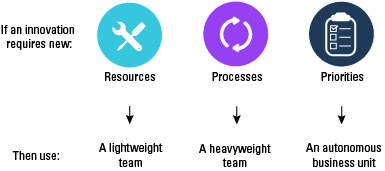Over the last 10 years, NBA basketball has undergone a technology-powered revolution. Sophisticated player tracking cameras and Moneyball-style analytics have facilitated the transition from rudimentary statistics and the “eyeball test” of whether or not a player is effective (“his shot looks great,” or “can’t he jump higher?”) to a more data-driven approach.
Traditionalists derided the movement in its early days, grumbling that it just confirmed what they already knew, and that it was blind to crucial factors like “heart” and chemistry. But teams that leveraged the technology started winning more by playing differently, emphasizing layups and three-pointers while avoiding inefficient long two-pointers, and preferring lineups with versatile, position-fluid players over the classic lineup complete with a big guy near the basket—more Kawhi Leonard, less Shaquille O’Neal. This also led to a more holistic acknowledgment of players’ skill sets and contributions to team success, including less visible ones.
Higher education is approaching its own technology-driven revolution in recognizing and enhancing learners’ skills, specifically in the form of digital credentials. But unlike in the NBA, where a new way of valuing players took hold relatively quickly, higher education’s credentialing system is still barely scratching the surface of what technology has to offer over a decade after education researchers recognized a role for digital badging, and still doesn’t reflect the skills-based language learners will need to communicate what they know and what they can do.
At the recent Digital Credentials Summit hosted by the IMS Global Learning Consortium, schools, employers, and entrepreneurs discussed the latest in credentialing technology and efforts to align data standards. The advancements discussed ranged from incremental to game-changing, and schools may be hard-pressed to know which solutions to adopt.
Institutions looking to leverage technological change toward skill development as effectively as the best NBA teams would do well to take a few pages out of the disruption playbook.
The right team for the right innovation
Not all digital credentialing technologies will fit into institutions’ business models in the same way. Some implementations will require a change in resources (e.g. purchasing new technologies, hiring new staff), some will require changes in processes (how resources work together to get things done), and others will cause institutions to change their very priorities (the value proposition and revenue model). Each type of change effort requires a different approach:

Depending on the value higher education institutions want their degrees to have in the real world, and how they intend for them to be used, the manner in which they organize teams to incorporate credentialing technologies should vary.
New resources: Better documenting what learners did
In the NBA, coaches and commentators have long assessed players based on points, rebounds, and assists. Before the analytics revolution, the assumption was that if your players improved on these metrics, your team would win more games, and teams designed their playbooks accordingly.
When new resources like player tracking technologies appeared, many coaches used them to simply track the same metrics and reinforce existing strategies.
Similarly, a college might want its degree to mean what it always has: “Our graduates made it through our admissions filters, sat in the right mix of courses for the right number of hours, and presumably learned to think more rigorously in the process.”
For institutions looking to credential their learners the way they’ve always done but better, a “lightweight team” consisting of change-makers within one department (in this case likely the registrar’s office) is enough. This team would decide on needed resources, such as purchasing a credentialing product to translate their paper transcripts into a sharable digital format, rather than fundamental changes to the whole school.
There has been progress on this front. Johns Hopkins University will roll out new digital transcripts that allow employers to drill down into individual courses, seeing course descriptions and learning objectives. This upgraded, portable transcript will provide more context around completed coursework.
It’s a promising step, but institutions taking this approach should not lull themselves into a false sense of having future-proofed themselves. NBA teams that failed to fully leverage the technology and more fully revamp their approach began to fall behind.
New processes and priorities: Documenting what learners can do
Among the major gains from the improved player tracking systems that powered the NBA analytics revolution were detailed shot charts: knowing from where on the court each player scores best. As teams better understood their players’ capabilities, they developed new processes by repositioning players, reordering lineups, improving player development efforts, and updating their playbooks.
Interestingly, not all of these adjustments led to improvements on the traditional statistics of points, rebounds, and assists. In fact, entire articles have been written about “no-stats all-stars” who underperform on the headline metrics but consistently help their teams win. This recognition led analysts to develop new metrics over the years, reflecting a new set of priorities that has dramatically altered how teams perceive and value different skill sets.
In higher education, some institutions are gearing up for the skills-based future barreling towards learners by finding ways to embed in-demand technical skills into degree programs, or to better teach, measure, and recognize the cognitive skills that the workforce most craves.
Credentialing technologies can accommodate this skills paradigm, but institutions looking to take full advantage of them will need to do more than just layer on a digital veneer. For example, consider how much Western Governors University’s disruptive, competency-based model differs from that of a traditional prestige-based university.
Anchoring an institution’s credentialing system on skills will require cross-departmental heavyweight teams or completely autonomous units to rethink processes and priorities—like outcomes measures—in addition to just bringing in new technologies.
New horizons: Recommending what learners could do next
The NBA analytics revolution suggests one more key to how institutions can unlock the most benefits for learners through digital credentialing technologies.
The Toronto Raptors—last year’s NBA champions, in case you’re an analytics skeptic—invested heavily in advanced tracking systems once they became available. Their analysts created proprietary software tools to visualize in-game sequences not just as they actually occurred, but also showing where Raptors players should have been to achieve the best results.
This is very complex in basketball. The best strategies require every player to move based on the movements of all the others, almost as a hive mind. The Raptors were thus leveraging technology to improve collaboration, helping each player progress both individually and contextually. Teams now also use tracking technology to monitor fatigue and bodily stress, preventing injury through preventative rest.
Where education providers can truly maximize their value for learners is in facilitating a Google Maps future for them. Credentialing systems that address not just what learners did and what they can do, but that also suggest where they could go will catalyze the golden age of learning.
Imagine hiring managers accessing portable learning records (with explicit permission) to assess aptitude for a role not in a vacuum, but in the context of existing employees’ skills. Imagine learners’ credentials calculating skill decay and advising learners to refresh their skills—avoiding learning injury, if you will—then proposing courses at their alma mater or another provider.
In order to reach this stage, institutions will have to dig deep and make some difficult changes. Disciplined schools could conceivably pursue short-term transcript digitization efforts to improve the experience of current learners while simultaneously investing in more transformational business model changes to better serve future learners.
Whatever approach best suits them, may colleges and universities revolutionize higher education credentialing in such a way that we have more NBA executives admiring our playbooks rather than the other way around.



